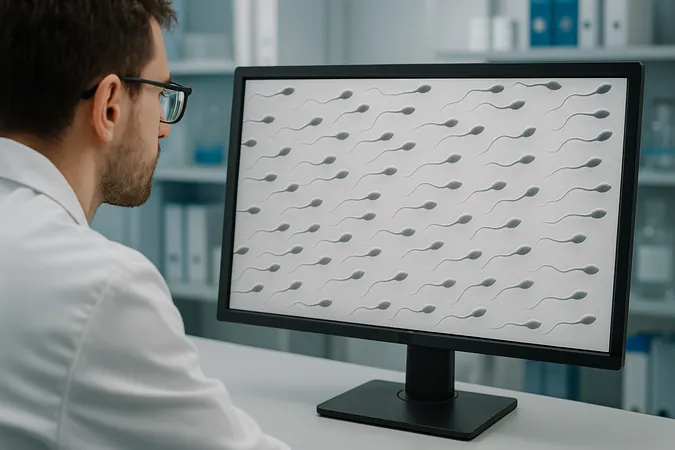
Revolutionary Breakthrough: Sperm Cells Transformed into Trackable Microrobots!
2025-09-07
Author: Jia
Unleashing the Power of Nature!
A groundbreaking team at the TechMed Center, University of Twente, has achieved the unimaginable: they've turned actual sperm cells into tiny, controllable microrobots! This innovative leap forward in medical microrobotics allows these sperm cells to be tracked in real-time using X-ray imagery, promising to disrupt fields like reproductive medicine, drug delivery, and infertility diagnosis.
The Marvel of Sperm Cells: Nature’s Ultimate Swimmers!
Sperm cells are agile swimmers, expertly navigating the intricate environments of the female reproductive tract. Their natural speed and flexibility make them ideal candidates for medical applications. Traditionally, however, capturing these elusive cells through conventional imaging methods has been nearly impossible due to their minuscule size and low density.
Game-Changing Coating: Bringing Sperm Cells into Focus!
In collaboration with Radboud University Medical Center and the University of Waterloo, the team developed an ingenious method to coat real sperm cells with magnetic nanoparticles. This revolutionary process allows them to be visualized under X-rays and manipulated with external magnetic fields. For the first time ever, researchers are successfully tracking and controlling these sperm-based microrobots within a full-scale anatomical model.
Drug Delivery: A New Frontier!
Once deployed, these remarkable microrobots can deliver medications directly to hard-to-reach areas like the uterus or fallopian tubes, injecting drugs right into the sperm cell bodies. 'We are turning nature's cell donor systems into programmable microrobots,' says lead researcher Islam Khalil. This advancement could significantly enhance targeted treatment for serious conditions such as uterine cancer, endometriosis, and fibroids, which often lack precise drug delivery methods.
Insight into Fertilization: Observing the Unseen!
Beyond targeted drug delivery, this cutting-edge technology opens doors to new understanding about fertilization. By non-invasively tracking sperm movement in the reproductive system, researchers hope to unravel the mysteries behind unexplained infertility and optimize IVF techniques.
Safety First: Biocompatibility of Nanoparticles!
Excitingly, tests revealed that these sperm nanoparticle clusters are biocompatible, exhibiting minimal toxicity to human uterine cells even after 72 hours of exposure. This promising trait positions them as ideal candidates for future in vivo applications.

 Brasil (PT)
Brasil (PT)
 Canada (EN)
Canada (EN)
 Chile (ES)
Chile (ES)
 Česko (CS)
Česko (CS)
 대한민국 (KO)
대한민국 (KO)
 España (ES)
España (ES)
 France (FR)
France (FR)
 Hong Kong (EN)
Hong Kong (EN)
 Italia (IT)
Italia (IT)
 日本 (JA)
日本 (JA)
 Magyarország (HU)
Magyarország (HU)
 Norge (NO)
Norge (NO)
 Polska (PL)
Polska (PL)
 Schweiz (DE)
Schweiz (DE)
 Singapore (EN)
Singapore (EN)
 Sverige (SV)
Sverige (SV)
 Suomi (FI)
Suomi (FI)
 Türkiye (TR)
Türkiye (TR)
 الإمارات العربية المتحدة (AR)
الإمارات العربية المتحدة (AR)